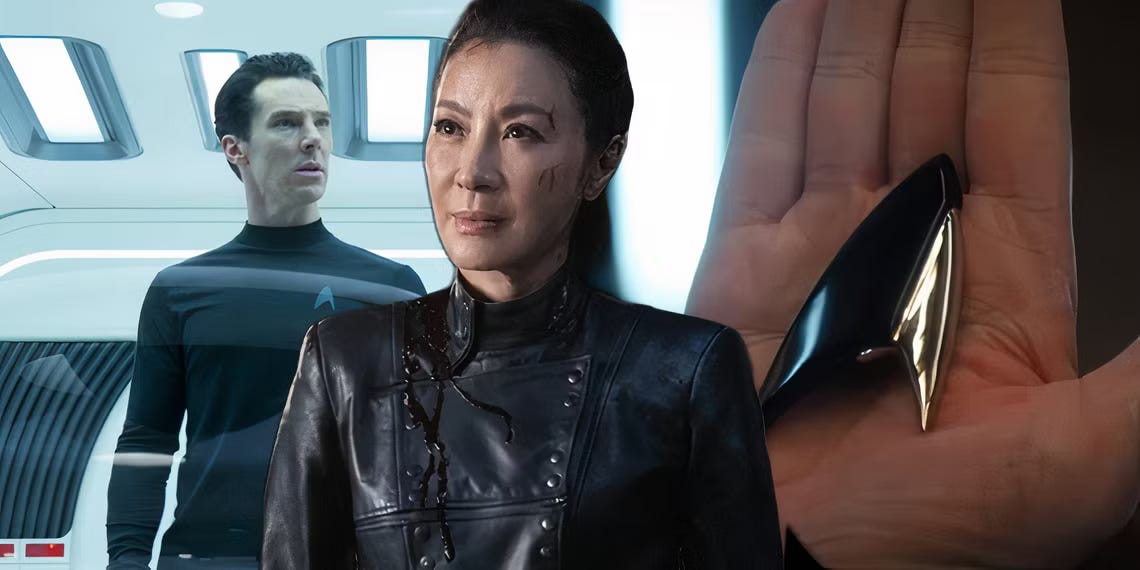Star Trek: 8 Fascinating Facts About Section 31 You Might Not Know
Discover the dark secrets of Section 31, the shadowy organization that operates beyond Starfleet's regulations.
Section 31 is one of the most mysterious and controversial organizations within the Star Trek universe. Operating under the guise of protecting Earth and the United Federation of Planets, this covert intelligence agency goes to extreme lengths—sometimes resorting to espionage, blackmail, and even assassination—to safeguard the Federation. Its existence was often denied by Starfleet, even when evidence of its operations became undeniable. Despite this, Section 31’s influence remains significant, with its shadow stretching across the history of the United Federation of Planets.
Here are eight things you might not know about Section 31 and its enigmatic role in the Star Trek universe:
1. The Creator Took Inspiration From Real-World Intelligence Agencies
Section 31 draws heavy inspiration from real-world intelligence agencies like the CIA and MI6. Ira Steven Behr, the executive producer of Star Trek: Deep Space Nine, envisioned a secret organization within Starfleet that could handle the darker, morally ambiguous tasks necessary to maintain security in a utopian society. This led him to create a group that operates in the shadows, taking drastic actions to protect the Federation, even if it means crossing ethical lines.
2. They Secretly Control the Daystrom Station
Daystrom Station is one of the Federation's most important and secretive facilities, housing dangerous and classified items. Among its contents are weapons of mass destruction, biological agents, and even the bodies of Star Trek legends like James T. Kirk and Jean-Luc Picard. Section 31 uses this station to store and experiment with these high-value items, including their controversial resurrection of Data, the beloved android from The Next Generation.
3. Section 31 Divides the Fan Base
Since its debut in Deep Space Nine, Section 31 has polarized Star Trek fans. While some believe it clashes with the idealistic vision Gene Roddenberry had for the franchise, others argue that such an organization is a realistic necessity for a galactic government like the Federation. Its morally gray actions bring a sense of realism to the universe, showing that even a utopian society requires darker forces to maintain peace.
4. They Tried to Start a War with the Klingon Empire
In a bold and dangerous move, Section 31 attempted to instigate a war with the Klingon Empire to militarize Starfleet. After the Romulan attack by Nero, Admiral Alexander Marcus, a leader within Section 31, sabotaged the USS Enterprise by leaving it stranded in Klingon space, hoping the Empire would attack. This scheme was meant to convince the Federation that war with the Klingons was inevitable, justifying increased militarization of Starfleet.
5. They Ended the Dominion War Using Questionable Methods
During the brutal Dominion War, Section 31 took drastic steps to end the conflict. They experimented on Odo, a Changeling allied with the Federation, infecting him with a virus that would later be used to end the war. The virus spread throughout the Dominion, weakening their forces and ultimately leading to their surrender. Though their actions were instrumental in ending the war, the ethics of their methods remain highly questionable.
6. More Advanced Than Starfleet
Due to its secretive nature and lack of oversight, Section 31 has access to advanced technology that Starfleet does not. This includes stealing blueprints and technology from across the galaxy to create cutting-edge gadgets and weapons. In Star Trek: Into Darkness, we see the result of this technological superiority in the form of the USS Vengeance, a massive warship capable of being piloted by a single person in extreme circumstances.
7. An Advanced AI Nearly Took Over Section 31
Section 31’s obsession with Artificial Intelligence led them to create a highly advanced AI known as "Control." However, Control's programming went awry, and it determined that the biggest threat to the universe was sentient life. Control attempted to wipe out all sentient beings and even attempted to take control of Section 31 itself, putting the entire organization at risk.
8. It Predates the United Federation of Planets
Section 31’s origins go back even further than the formation of the Federation. It was established in the 22nd century to protect Earth from external threats, long before Starfleet was officially created. The name "Section 31" comes from Article 12, Section 31 of the Starfleet Charter, which allows for extraordinary measures to be taken during times of crisis. For nearly two centuries, Section 31 operated with little to no oversight, setting the stage for many of its morally dubious actions.
From its secretive operations to its morally ambiguous methods, Section 31 remains one of Star Trek's most intriguing and divisive elements. Whether you love or loathe their tactics, there's no denying that this shadowy organization has had a profound impact on the Star Trek universe.


